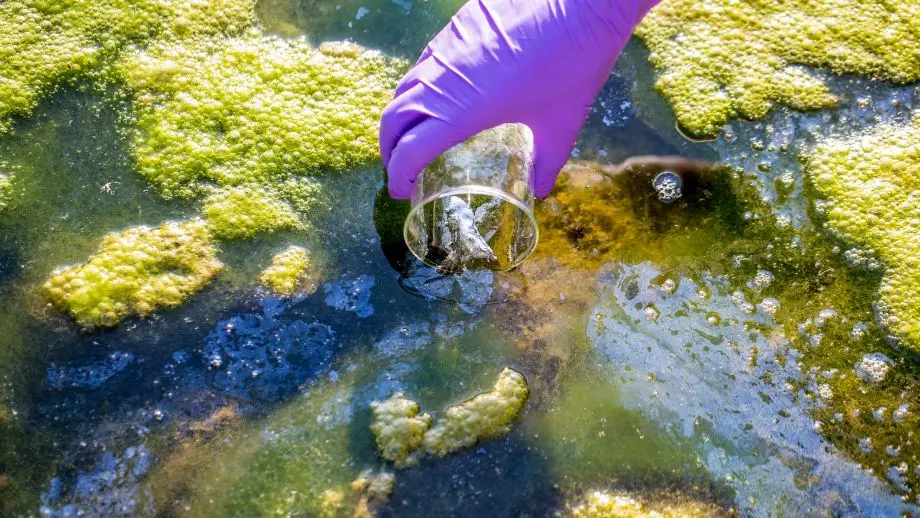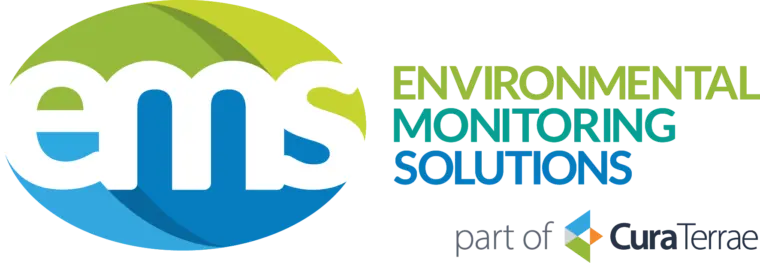Chlorophyll-a monitoring: your questions answered
7 August 2023

What is chlorophyll –a?
Chlorophyll is a pigment present in plants which allows them to sustain themselves through photosynthesis. There are certain chlorophylls specific to certain plants, algae or cyanobacteria, which may be used to identify the algal groups present. For example, chlorophylls b, c1, c2, d, or f are specific to certain organisms. However, chlorophyll-a pigment is universal to all plant types. This is why chlorophyll-a is used as a parameter for measuring water quality – it can give an indication as to the overall phytoplankton biomass which can be a sign of eutrophication taking place.
Why do I need to monitor water for chlorophyll- a?
A chlorophyll-a measurement can indicate the state of an environment or habitat, and the onset or decline of algal blooms.
A chlorophyll sensor can be used to detect phytoplankton in-situ. An increase in phytoplankton can be a consequence of advancing eutrophication. Algal plant growth or phytoplankton biomass is estimated by the chlorophyll-a concentration, as all phytoplankton have chlorophyll-a. Therefore, chlorophyll-a can give an idea of whether eutrophication may be occurring/have occurred.
Elevated levels of algae (containing chlorophyll-a) often indicate poor water quality and low levels often suggest good conditions, so they can be used to identify the trophic state of a body of water.
Eutrophication as a result of algal blooms is often an indicator of agricultural runoff, which can raise phosphorus and nitrogen concentrations to very high levels. If there are too many nutrients, an algal bloom will occur, which can affect water quality and aquatic health.
What is Eutrophication?
Eutrophication is a process that happens in the following stages:
- Surface waters become high in nutrients, generally phosphorus and nitrogen. High levels of these nutrients can indicate man-made sources of pollution, such as sewer system leakage or overuse of fertilisers.
- These nutrients cause the algae to bloom.
- When this happens, sunlight is blocked from reaching levels below the algae and so lower-level organisms end up dying, unable to photosynthesize.
- The bacteria carrying out the decomposition process use oxygen to do so, further depleting the oxygen from the waterbody.
- They deplete dissolved oxygen levels which results in the death of aquatic animals.
How do I monitor chlorophyll –a? How do chlorophyll monitors work?
In-situ chlorophyll-a measurements are recommended in standard methods for the examination of water and wastewater to estimate algal populations.
Chlorophyll-a sensors rely on fluorescence to estimate phytoplankton levels based on chlorophyll concentrations in a sample of water. Fluorescence means that when the chlorophyll is exposed to a high-energy wavelength (approximately 470 nm), it emits a lower energy light (650-700 nm). This returned light can then be measured to determine how much chlorophyll is in the water, which in turn estimates the phytoplankton concentration.
What are typical freshwater chlorophyll-a levels?
It is natural for chlorophyll-a levels to fluctuate over time; they are often higher after rainfall, particularly if the rain has flushed nutrients into the water.
According to the EA, a chlorophyll threshold of 30µgl-1 can indicate the onset of an algal bloom for most rivers. For larger rivers, with higher chlorophyll levels (such as the Thames), the thresholds for algal blooms are higher.
In temperate fresh waters, growth is limited in winter because light and temperatures are low. A significant increase in the spring normally occurs as light conditions improve, and water begins to mix.
In the summer, phytoplankton flourish until the nutrient supply begins to run low. In tropical lakes, the phytoplankton distribution is constant throughout the year, and seasonal population changes are often small.
In temperate and subpolar waters, seasonal fluctuations are normally large. Fluctuations in population also occur if agricultural runoff brings additional nutrients into a body of water.
Why specifically measure chlorophyll-a?
There are certain chlorophylls which are specific to certain plants, algae or cyanobacteria which may be used to identify the algal groups present, for example chlorophylls b, c1, c2, d, f. However, chlorophyll-a pigment is universal to all plant types. As all phytoplankton have chlorophyll-a, a chlorophyll-a sensor can be used to detect these organisms in-situ.
Measuring chlorophyll-a specifically will allow you to get a more accurate assessment of the biomass of phytoplankton.









